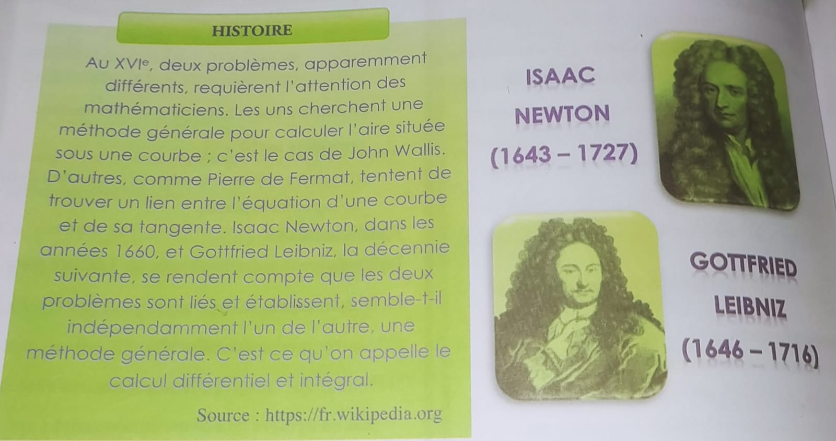
Histoire

Activité 1
[size=150][b]Soit [/b][math]f[/math][b] une fonction continue sur un intérvalle [/b][math]I[/math][b] de [/b][math]\mathbb{R}[/math][b] et [/b][math]a,b[/math][math]\in I[/math][b] [br]Soit F et G deux primitives de [/b][math]f[/math][b] sur [/b][math]I[/math][b] . Montrer que [/b][math]F[/math][math](b)[/math][math]-[/math][math]F[/math][math](a)[/math][b]=[/b][math]G[/math][math](b)[/math][b]-[math]G[/math][/b][math](a)[/math][/size]
[math]\bullet[/math] [size=150][b]Le nombre [/b][math]F[/math][math](b)[/math][b]-[/b][math]F[/math][math](a)[/math][b] est indépandant du choix de fonctions primitives de [/b][math]f[/math][b] sur [/b][math]I[/math] [br][math]\bullet[/math][b] Le nombre [/b][math]F[/math][math](b)[/math][b] -[/b][math]F[/math][math](a)[/math][b]s'apppelle l'intégrale de [/b][math]f[/math][b] de a à b et on écrit [/b][/size][br] [math]\int_a^bf[/math]([math]x[/math])[math]dx[/math]=[math]\left[F\left(x\right)\right]_a^b[/math]=[math]F[/math]([math]b[/math])-[math]F\left(a\right)[/math]
